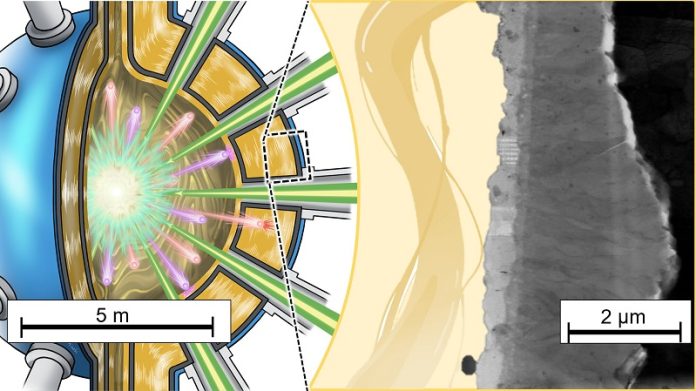
Scientists are making fusion energy—a cleaner, nearly limitless power source—more practical by developing materials that can handle extreme conditions.
A recent study, published in Corrosion Science, reveals how special alloys called oxide dispersion-strengthened (ODS) FeCrAl alloys can resist the harsh environments inside fusion reactors.
These findings are a step toward making fusion power a sustainable and reliable energy source.
Fusion reactors generate incredible heat, and their cooling systems often rely on liquid metals like lithium-lead (LiPb).
While LiPb helps transfer heat and produce tritium fuel, it is highly corrosive, damaging the materials it touches over time.
This creates a significant challenge: finding materials that are strong, resistant to corrosion, and long-lasting.
ODS FeCrAl alloys are a promising solution.
These materials are known for their strength and ability to form protective oxide layers like α-Al2O3 (alumina), which shield them from heat and corrosion. However, when exposed to flowing liquid LiPb, even these layers face chemical reactions that can weaken their durability.
Researchers from the Institute of Science Tokyo, led by Associate Professor Masatoshi Kondo, tested two types of ODS FeCrAl alloys—SP10 and NF12.
They exposed these alloys to flowing liquid LiPb at 600°C (873 K), simulating the challenging conditions inside a fusion reactor.
Using advanced tools like electron microscopes, the team analyzed how the alloys reacted to prolonged exposure. Their goal was to understand how the protective oxide layers formed on the alloys and whether these layers could endure high temperatures and corrosion.
The researchers discovered that pre-formed α-Al2O3 layers on the alloy surface initially resisted corrosion but gradually absorbed lithium from the liquid LiPb.
This caused the alumina layer to partially transform into another material, a mix of α- and γ-LiAlO2. Surprisingly, even alloys without a pre-formed oxide layer developed a protective γ-LiAlO2 layer on their own during testing.
This self-forming layer proved to be an excellent shield against further corrosion. Both the α-Al2O3 and γ-LiAlO2 layers stuck firmly to the alloy surface, even under mechanical stress and thermal changes caused by the liquid metal. Tests showed minimal peeling or damage, demonstrating the strong durability of these layers.
“The durability of the lithium-aluminum oxide layer shows that these alloys could last longer in high-temperature, high-stress settings,” explained Professor Kondo. “This layer serves as a sustainable shield that continues protecting reactor components even after initial wear.”
These findings are crucial for advancing fusion technology. Durable materials like ODS FeCrAl alloys could allow fusion reactors to run longer and require less maintenance, making clean energy more feasible. Beyond fusion reactors, these materials could also benefit other high-temperature systems like concentrated solar power plants.
As nuclear energy technology evolves, the insights from this research bring us closer to building reliable fusion reactors. ODS FeCrAl alloys, with their ability to form strong and self-healing protective layers, are paving the way for a cleaner, more sustainable future.
“By improving material durability, we are addressing a critical barrier to the commercialization of fusion energy,” said Kondo. “These alloys could play a key role in the future of high-temperature energy systems.”
Source: Institute of Science Tokyo.



